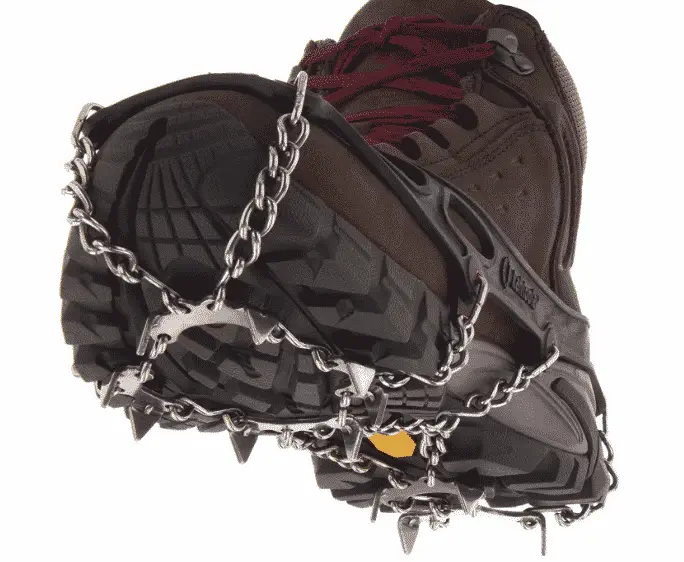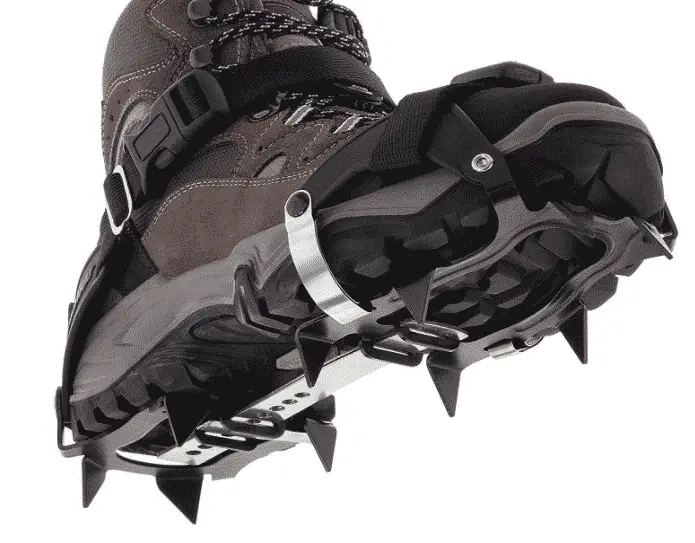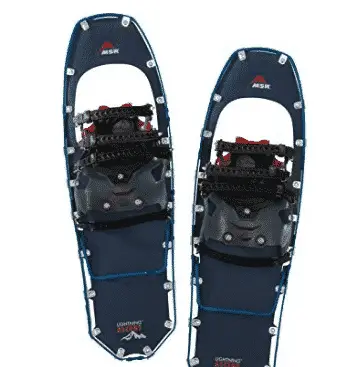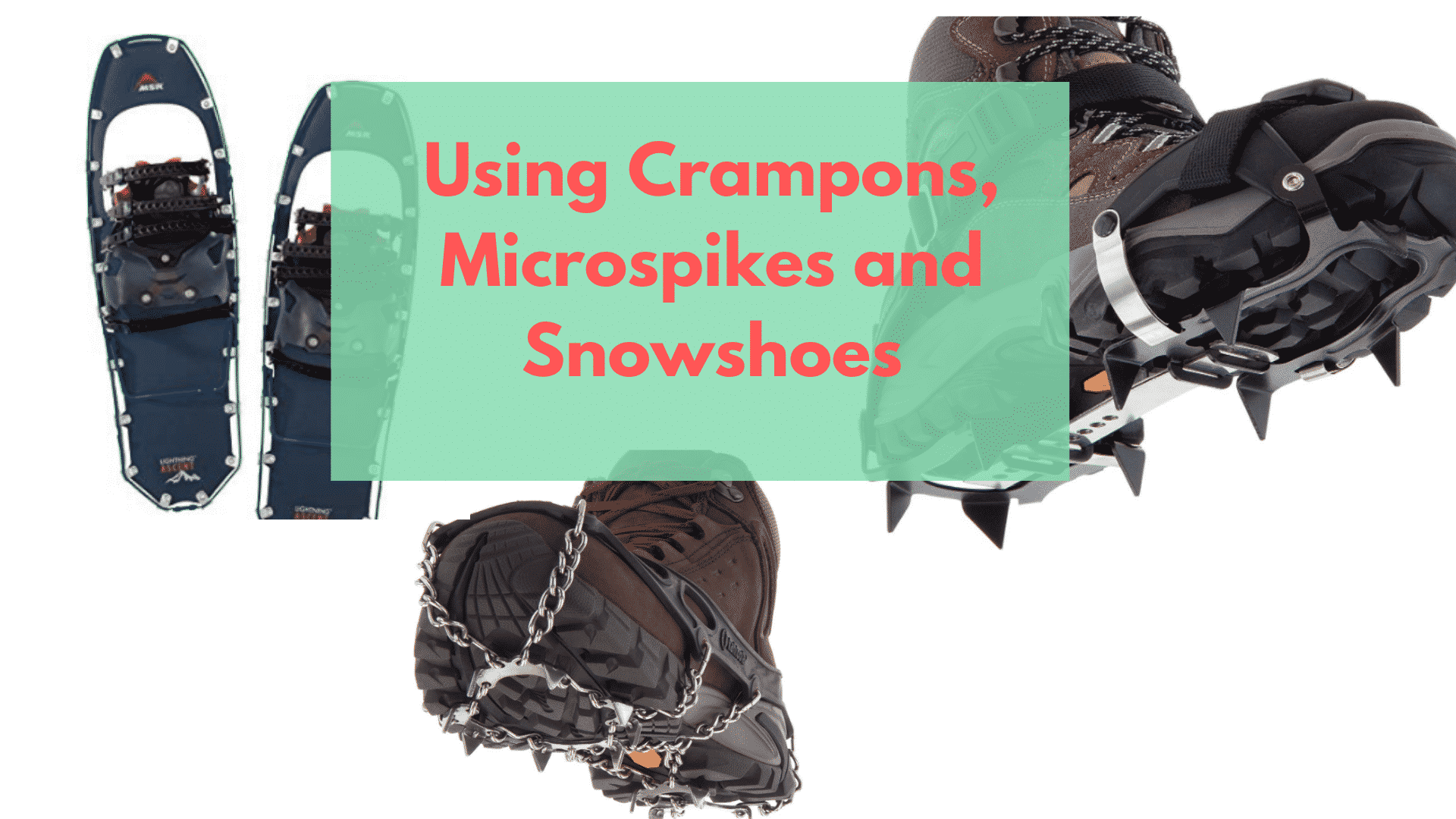Hiking in the winter is all about trying to find traction. That’s easier said than done when traversing ice and packed snow. Winter hikers typically use three different types of traction devices to traverse rough terrain: Crampons, Microspikes and snowshoes.
When Should You Use Traction Devices?
Hikers generally use microspikes and crampons to travel through ice and packed snow. They’re typically used on slippery and uneven terrain. With crampons/microspikes you get a deeper bite into slick terrain.
On the other hand, snowshoes are designed to spread your weight evenly across the top of snow. Instead of sinking into the snow you float on top of fresh powder.
Don’t Put Them on Early
You never know when you’re going to need traction devices. Hiking up a steep hill or mountain will quickly test your physical limits. Put them on too early and you’ll quickly wear out, wait it out and you risk slips and falls. Your best bet is to put them on once you start noticing traction problems and not before.
When to Use Microspikes?

Unless you’re hiking steep difficult terrain you should stick to microspikes. Microspikes work best on flat terrain covered in packed snow/ice. If you’re traversing fluffy snow stick to snowshoes.
Microspikes provide that extra bit of traction when boot treads just aren’t cutting it. They just add a more aggressive tread to the bottom of your shoes.
The only downside is you’re adding extra weight to the bottom of your shoes. Considering my Kahtoola Microspikes (which are awesome) are about 1/2 lb each that’s a lot of added weight. Since my winter hiking boots only weigh 20oz that really throws off the weight of my boot.
Just remember that even on level ground you’re going to wear out early on longer hikes. When you encounter ice put them on, but try to hold off on packed snow.
While microspikes are awesome and can get you through 99% of terrain they do have some limits. If you’re trying to tackle steep inclines and slopes covered in ice you need to switch to mountaineering crampons which have longer sharper teeth.
When Should You Use Mountaineering Crampons?

Honestly, Mountaineering crampons are a pain in the butt to walk on. They should only be worn when you absolutely need them. I’m talking about steep angled ice, icy rocks, and basically anywhere else that you need a deeper bite.
Basically if you’re risking serious injury on rough terrain switch over to crampons. They just give you better footing when you’re climbing a slope. Microspikes just aren’t going to cut it.
Don’t get me wrong, microspikes aren’t bad, the chains just aren’t tight enough to provide a stable surface on sloped ground. It’s like climbing a rock wall in sandals. They’re going to slide around and probably fall off. Plus the spikes are too short to fully penetrate the surface of the ice.
When hunting for crampons look at the front spike. Longer front spikes (like these) are so you can kick into vertical ice. You can get a toe hold when there’s nothing to grab onto.
There are a bunch of different styles of crampons on the market ranging from light-heavy duty. Most people will get away with light duty crampons like the Kahtoola K10 Hiking Crampons. They can be used with any hiking boot and were designed for long distance hikes.
More expensive crampons made by companies like Black Diamond are targeted towards the serious mountain climber. They can only be worn with stiff mountaineering boots so they aren’t really designed for the typical hiker/outdoorsman.
When Should You Use Snowshoes?

Snowshoes are designed to lift you up out of the snow by spreading your weight over top of a large surface area. They basically provide flotation on top of deep powdery snow so you don’t sink in.
You can really save a ton of energy when you don’t have to trudge through deep snow. No more fighting through thigh and waist high snow in the backcountry.
Another key advantage to snowshoes is that they provide traction on icy surfaces. (Check out the bottoms on these snowshoes) While they aren’t quite as good on ice as crampons/microspikes most snowshoes actually have integrated spikes to provide traction. They’re kind of awkward on steep hills, but they’re excellent in lower angle situations.
Just make sure you buy snowshoes that are designed specifically for your bodyweight. Bigger surface area gives you more lift, but they’re going to be harder to walk in.
Personally I prefer MSR Trailshoes (these are the ones I wear), but I’ve also heard great things about the Chinook Trekker Snowshoes. The biggest difference is in the bindings and weight distribution. Don’t cheap out and get the plastic junk you find at Walmart. They don’t last!




